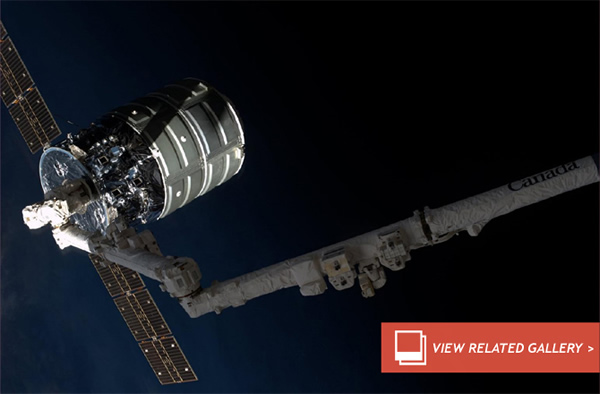Orbital Sciences' Cygnus Capsule Leaves Space Station
Orbital Sciences Corp.’s Cygnus cargo capsule left the International Space Station on Tuesday, wrapping up a successful test flight that clears the company to begin making regular resupply runs for NASA beginning in December.
Cygnus is the second commercial freighter, developed in partnership in NASA, to reach the space station, which had been dependent on cargo ships built and operated by partners Russia, Europe and Japan to keep the station stocked following the retirement of the space shuttles in 2011.
Space Exploration Technologies, which started work for NASA about 18 months before Orbital Sciences, made a test flight to the station in May 2012 and so far has completed two of 12 planned resupply missions.
Cygnus, which unlike SpaceX’s Dragon capsule does not return to Earth, is expected to fire its braking rocket on Wednesday to lower its orbit and allow itself to be dragged back into the planet’s atmosphere for incineration.
The capsule was loaded up with garbage and items no longer needed aboard the station before its release at 7:31 a.m. EDT on Tuesday.
“We are delighted to now have two American companies able to resupply the station,” NASA administrator Charles Bolden said in a statement.
“Orbital’s success today is helping make NASA’s future exploration to farther destinations possible,” he added.
With the prospect of the shuttle program ending, NASA opted to partner with SpaceX and Orbital Sciences to keep a U.S. supply line to the station open, rather then spending the money to develop a new space transportation system in house. Instead, NASA is focusing on designing a heavy lift rocket and capsule that can fly astronauts beyond the station’s 250-mile (400 kilometer) high orbit.
The agency is hoping a sister program to develop space taxis to fly crew to the station will bear fruit by 2017. Three companies — SpaceX, Boeing and Sierra Nevada Corp. — currently are working with NASA under its Commercial Crew program.
Image: The Cygnus capsule being released by the space station’s robotic arm, Canadarm2, on Tuesday morning. Credit: Karen Nyberg/NASA(Oct 22, 2013 01:37 PM ET // by Irene Klotz)












